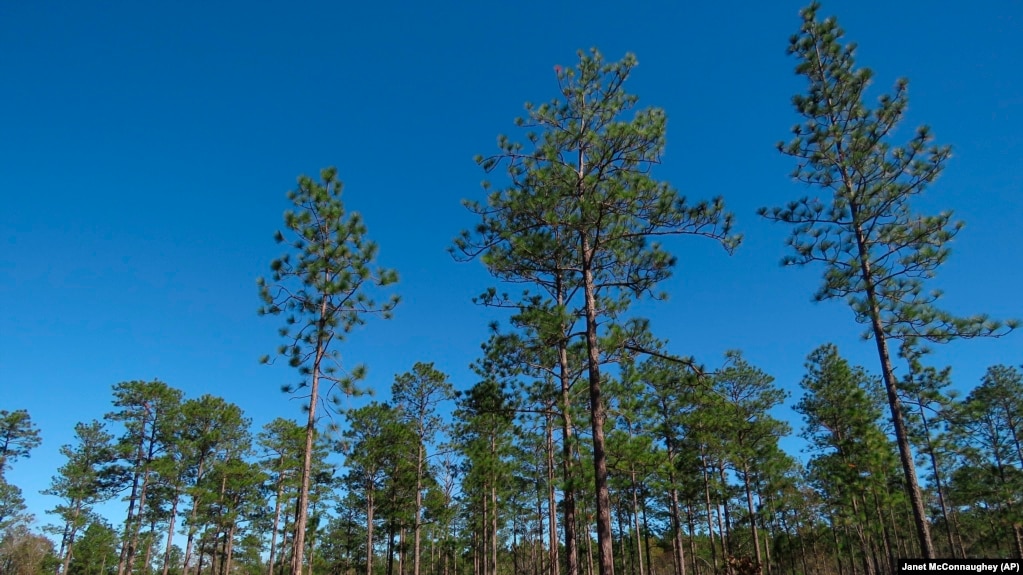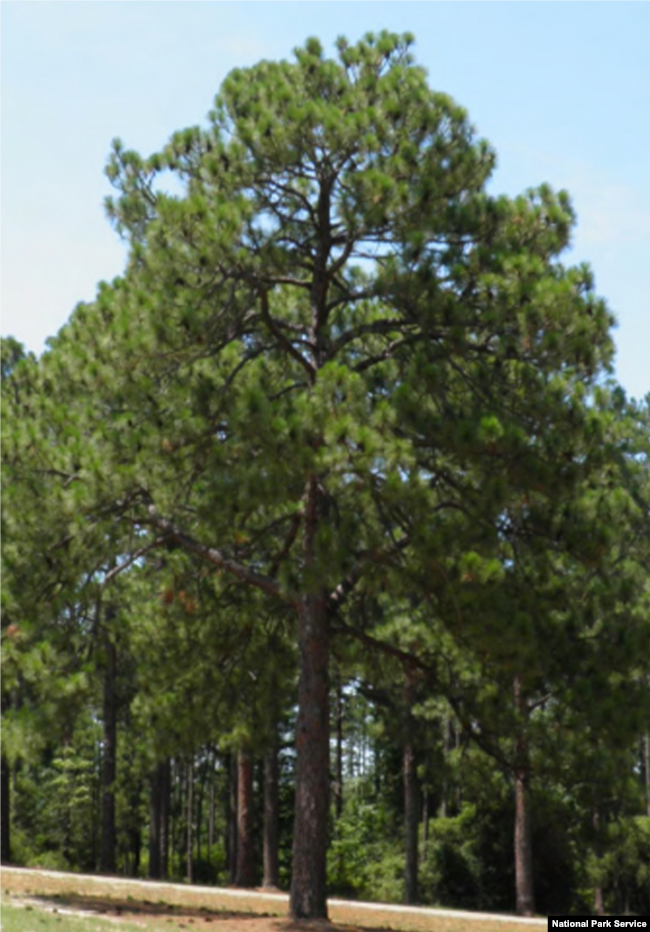
FILE - Longleaf pines, about 80 to 85 years old, stand tall in the DeSoto National Forest in Miss., on Wednesday, Nov. 18, 2020. (AP Photo/Janet McConnaughey)
The longleaf pine tree has deep connections with the history and life of the eastern part of America.
Forests of these trees once covered two-thirds of the southeastern United States. About 95 percent of those forests were lost in the past 100 years. Many of the forests were cut for their wood, but now they are returning, with the help of government programs that build ties with private landowners.

A Mature Longleaf Pine
Strong, long-lasting wood
The wood of the tree is very strong. Most buildings built in the southern U.S. from the 1800s contained longleaf pine wood. Today, after a building made with longleaf pine is no longer wanted, people are re-using the wood because it is still good and resists water and insect damage.
The longleaf pine also captures carbon dioxide in the air. It stores the substance in its wood. So, the tree is valuable to the environment as a way to store carbon.
A place for birds and animals
In addition, the pine forests are places for animals to live. The U.S. government has several programs to protect and expand longleaf pine forests. One is the Safe Harbor Program. It uses voluntary agreements with private landowners to help endangered animals. One such agreement protects the red-cockaded woodpecker and also lets landowners use their land, as long as the birds and other related animals can safely live on it.
Now, farmers and landowners in the Southeastern U.S. are growing new longleaf pine trees. Instead of cutting the trees to use as building materials, they are finding ways to make money from the forest of living trees. One way to get income is by selling the leaves, or needles, of the trees as a ground cover.
Many uses for the forest
Farmers can gather the pine straw by hand or with use of a machine. Pine straw can be used instead of wood pieces or bark as a ground cover. It lasts a long time, is light weight and stays in place because the needles connect to each other. The straw is high in nitrogen, a nutrient that helps plants grow. And, it does not attract harmful insects!
Native American tribes, such as the Choctaw and Cherokee nations in Louisiana, make coiled baskets from the long needles of the longleaf pine. A basket made of the pine needles by Native American artists can sell for as much as $750.

A black longleaf pine needle basket made by Becky Thomas, Clifton Choctaw Tribe member
Another way forests can produce income is to sell hunting rights. Wild boars – a kind of pig – live in some forests. Their population has been growing out of control in recent years. The animals can damage the young longleaf pine trees, so landowners want to reduce their numbers. Hunting boar is a popular sport in the southern U.S. and the right to hunt on land can cost from $200 to $1,000 a day.
The Kisatchie National Forest in west central Louisiana contains most of the remaining longleaf pines in that state. In the past, Native Americans burned the forest every two to four years, if lightning did not cause fires naturally. Fire helps the young pine trees to grow by clearing away the other plants on the floor of the forest. Recent debate has centered on the value of letting some parts of the forests burn for this purpose.
I’m Jill Robbins.
Words in This Story
needle – n. a long, thin leaf of a pine tree
bark - n. the outer covering of a tree
pest – n. an animal or insect that causes problems for people especially by damaging crops
bale – n. a large amount of a material (such as hay or wool) that is pressed together tightly and often tied or wrapped
Comprehension Quiz
1. How much of forests were lost in the past 100 years?
2. What another way can forests produce income?
3. How often did Native Americans burn the forests?
4. What is a popular sport in the southern U.S?
5. What are farmers and landowners in the southeastern U.S growing?